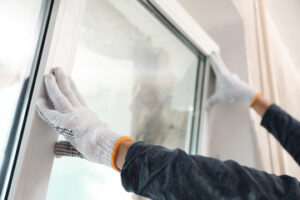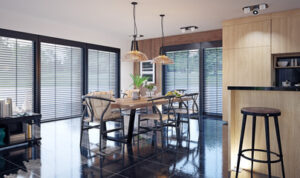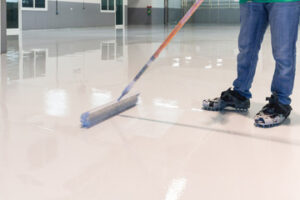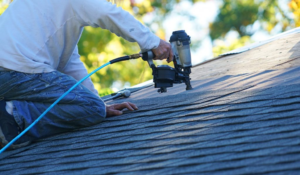Cabinet Refinishing is a cost-effective way to dramatically improve the look of existing cabinets. It involves sanding and applying new paint to existing cabinet doors and frames.
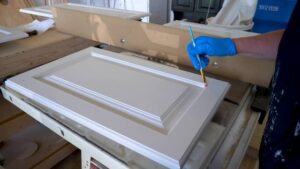
To ensure the best results, cabinet painting requires careful preparation. A thorough sanding and use of a high-quality primer are essential for proper adhesion.
Cabinet Refinishing is the process of giving your existing cabinets a new coat of paint or stain. It is a cost-effective solution that can offer a significant visual update for your kitchen without the expense and hassle of a full replacement project. Cabinet refinishing is typically best for homeowners who like their current cabinet doors and hardware, but want to make an aesthetic change. However, refinishing doesn’t provide much in the way of structural improvement and isn’t ideal for older cabinets that might not respond well to sanding or new finishes.
Before refinishing your cabinets, it’s important to properly prepare them for a new finish. This involves cleaning thoroughly with a degreaser and scrubbing to remove grease build-up, which will help your new finish adhere more effectively. You’ll also want to remove your cabinet doors and hardware, labeling each item for reassembly later on. This will save you time, ensure the job is done correctly, and prevent paint or stain drips on your counters and floors.
Refinishing requires the use of chemicals and fumes that can be harmful if not used in a well-ventilated area with proper safety equipment. It can lead to skin and eye irritation, respiratory problems, and even serious health issues such as cancer. This is why it’s always best to hire a professional refinisher who knows how to work with these products safely.
Using a high-quality primer, such as KILZ 3, will create a smooth base for your topcoat and promote better adhesion. It’s important to apply primer evenly and let it dry completely before proceeding. A spray gun makes this step quicker and easier, but the same preparation steps should still be taken to avoid mistakes and to protect your walls and floor.
Sanding
Cabinet refinishing is the most basic form of cabinet refresh. In this method, all of the existing components of your cabinets are kept, but the color or finish is changed. This type of update is usually cheaper than a full replacement.
While it was once a very time consuming and labor intensive process, significant advancements in cabinet refinishing have made it much more efficient. Professionals use advanced techniques to clean, sand and prepare surfaces so that your cabinets will accept new paint. They will even do minor repairs if needed.
Once the sanding is complete, your cabinets will be ready for primer. Make sure you use an adhesion promoting primer, like Extreme Bond, to ensure that the new coat of paint will adhere to the surface. Let the primer dry completely before moving on.
You should also do a final walk-through of your cabinets to look for any spots that need touch up. You will likely need to apply a second coat of primer, so give yourself plenty of time between coats.
When considering whether to refinish or reface your kitchen cabinets, it is important to keep in mind that refacing is more extensive than refinishing. The main difference is that refacing replaces the door and drawer fronts of your cabinets with new materials. In addition, refacing can be done with or without replacing the hinges and hardware. If you are happy with the layout of your cabinets, and only want to change the look and feel, then refinishing might be a good choice for you. However, if you want to change the style of your doors or need more dramatic changes to the overall look of your kitchen, then refacing is probably a better option.
Primer
The primer is like the glue layer that connects the paint to your cabinets. It is specially formulated to adhere really well to the surface it is on, and it provides a better base for the paint. If you skip this important step, your beautiful new coat of paint could rub off in a heartbeat if something was to be wiped across it!
There are many different types of primers, and they all have their own advantages and disadvantages. It is important to read the label on your product and follow all of the specific instructions to ensure the best results.
Choosing the wrong primer is one of the biggest mistakes you can make. You want to use a primer that is compatible with the type of paint you are using.
There are oil-based, latex, shellac, and water-based primers available. Each type has its own advantages and disadvantages, and the right choice will depend on the type of paint you are using and your substrate.
The wrong primer can cause the paint to flake, bubble or chip, which will detract from the overall appearance of your project. The incorrect primer can also affect how long the final product will last, so it is important to take the time to choose the right one for your project.
In addition to ensuring that the surface is clean and free of dirt and grease, you should also make sure that adequate ventilation is in place during application. This is especially true for primers that have a strong odor, as they can be unpleasant to work with and can linger in indoor spaces.
Paint
Once all the preparation and sanding is complete, our team will begin applying your cabinet paint. We will apply the first coat using a brush and mini roller, which leaves minor brush marks to achieve a smooth finish. Then we’ll wait 4 hours for it to dry before we can apply a second coat. Once both coats have dried, we will reattach the doors and hardware and your cabinets are ready for use!
Before painting begins, the team will cover countertops, appliances, floors and anything else that needs to be protected from overspray with paper or plastic. Then, the cabinet framework or “bones” are lightly sanded to ensure a smooth surface and primed. This primer is the most important step in any cabinet refinishing project, as it protects against chipping and peeling in high-traffic areas. It also helps prevent mildew growth in moisture-prone areas like kitchens, and it is designed to be stain resistant as well.
When painting cabinetry, our design professionals tend to lean towards oil-based enamel paints. These provide a more durable finish, and they offer the best color options to match most design aesthetics. Once the cabinetry is painted, our team will touch up any spots that need additional coverage and sand again to smooth surfaces and ensure an even finish. Finally, a final cleaning is performed to remove any lingering chemicals or debris.
Refinishing is an excellent option for homeowners who want a quick visual update to their kitchen. However, this type of update is not as long-lasting as other options, such as refacing or replacing the door and drawer fronts with new materials. Moreover, pre-existing damage or frequent use of cabinet doors can cause a refinished surface to wear and scratch more quickly than expected.
Reassembling
Once the cabinet refinishing process is complete, you can start reassembling your cabinets. This requires carefully removing cabinet doors and drawer fronts, then chemically stripping them, repairing any damage, priming and painting or re-staining. Then, once everything is dry, they’re reattached to their hinges and hardware and returned to the cabinet boxes. Careful labeling helps ensure that your cabinet pieces are put back in the correct place. This part of the job takes a lot of patience and attention to detail.
Cabinet refinishing is an economical way to transform your kitchen, saving you money over a cabinet replacement or refacing project. It’s also eco-friendly, as the refinishing process reduces waste generated by other renovation methods such as demolition and disposal of existing cabinets.
However, cabinet refinishing is not right for everyone. It may not be suitable if you want to change the look of your cabinets significantly, such as moving from stained to painted doors or if your current cabinet doors are in poor condition (splitting Rigid ThermoFoil for example). Refinishing also typically only addresses surface-level issues, such as scratches, dents and faded colors.
Cabinet refacing is a more comprehensive kitchen remodeling solution that provides a full style overhaul. In this process, your cabinet boxes remain intact and new wood or laminate veneers are applied to the cabinet faces and box sides. This allows you to choose from a wide range of materials, designs and hardware options for a completely customized look. It’s an ideal solution for homeowners who are satisfied with their kitchen’s layout but want a significant upgrade in quality and appearance.
